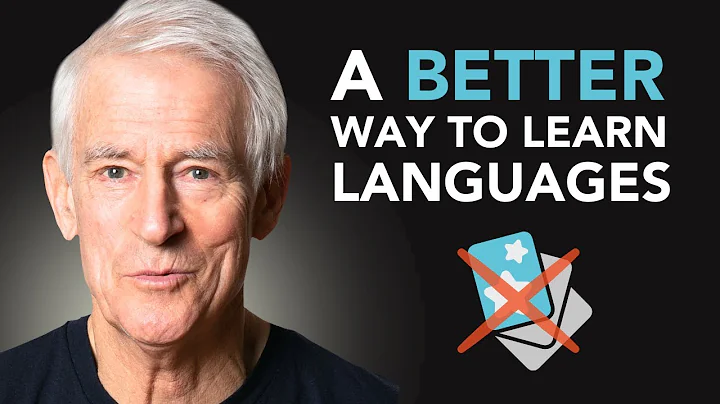
April 22
The Ministry of Education officially issued
"Compulsory Education Curriculum Plan
and Curriculum Standards (2022 Edition)"
New Curriculum Plan and Curriculum Standards
Started to implement
Compulsory Education Curriculum Plan
is the first revision of
Curriculum Standards
is also the first revision of
in 10 years
This revision has systematically designed
Course content structure, academic quality standards
, etc. There are major changes in

, etc.

What are the important changes that are worth paying attention to for the English subject?
What impact will these changes have on basic education and how to deal with classroom teaching?

Recently, Education Times reporter interviewed Wang Caiqin, professor of , School of Foreign Languages, Henan Normal University, and asked her to help everyone better understand the core literacy and understand the impact of new plans and new curriculum standards on curriculum content and classroom teaching.

Wang Caiqin
Teacher Growth College, Professor and Master's Supervisor at the School of Foreign Languages, Henan Normal University. The first outstanding teacher of education in the country and a member of the expert database of the first "National Training Program" of the Ministry of Education. Outstanding teacher in Henan Province, the first teacher education expert of primary and secondary school kindergartens in Henan Province, and the most beautiful teacher of "outstanding Henan people" in 2018. We are always committed to the teacher education practice promotion model of " same course, heterogeneous , observation and discussion courses, and clinical case teaching". We are known as the "navigator" of the development of basic education teachers in Henan.

The future has come:
The opportunities and challenges brought to teachers by curriculum reform
—Dialogue with Wang Caiqin, Professor of the School of Foreign Languages, Henan Normal University,
1 The goals and requirements of the new curriculum standards and new plans are closely linked to the development process of core literacy, and are in line with the same line
Education Times
Professor Wang, the new curriculum standards have repeatedly emphasized the cultivation of core literacy. What is the development context of core literacy? What reference value does the "Compulsory Education Curriculum Plan and Curriculum Standards (2022 Edition)" provide for the development of students' nuclide skills?
Wang Caiqin: The concept of "core literacy" was first proposed by OECD, that is, Organization for Economic Cooperation and Development.
In 2005, EU officially released the "Core Literacy: European Reference Framework", recommending 8 core literacy to member states as a reference framework for promoting lifelong learning education and training reform.
In 2015, UNESCO released "Education Rethinking: For the Common Benefit of Globalization", reaffirming the humanistic educational concept, emphasizing changing the way of thinking and world outlook, and cultivating students to learn critical thinking, independent judgment, debate, problem solving and information media literacy.

my country paid full attention to the educational value and function of the 21st century core literacy training goals in 2014. On March 30, 2014, the Ministry of Education issued the "Opinions on Comprehensively Deepening Curriculum Reform and Implementing the Fundamental Task of Cultivating Morality and Cultivating People".
In 2016, the Ministry of Education released the general framework for the core literacy of Chinese students' development: with cultivating "people with comprehensive development" as the core, including cultural foundation, independent development, and social participation, which are comprehensively reflected in six major qualities such as humanistic background, scientific spirit, learning to study, healthy life, responsibility, and practical innovation, and are specifically refined into 18 basic key points such as national recognition of . The qualities are interconnected, complemented and promoted each other, and play a role in different situations as a whole.
In 2017, the Ministry of Education launched the core literacy system and standards for various subjects of ordinary high schools.
In November 2021, UNESCO released the "Jointly Reimagining Our Future: A New Social Contract for Education" to the world, exploring and looking forward to education towards the future and even in 2050: The world is in an era of great change that has not been seen in a century. Many global problems and disruptive technologies represented by digital technology have had a significant impact on education.

As an important fulcrum for solving world inequality, education carries the beautiful expectations of mankind, but it also needs to respond to the urgent need to reimagine "why learn, how to learn, what to learn, where to learn, and when to learn".
Based on this, the report raises three basic questions about education: "When we look forward to 2050, what should we continue to do? What should we abandon? What should we innovate? ... Education can be regarded as an social contract - an implicit agreement reached by members of society for the shared benefit." This contract originated from a shared vision, that education has a public purpose.
htmlOn April 22, the Ministry of Education issued the "Compulsory Education Curriculum Plan and Curriculum Standards (2022 Edition)", emphasizing the literacy orientation, focusing on cultivating students' core literacy required for lifelong development and adapting to social development, especially the ability to solve problems in real situations, establish curriculum goals based on core literacy, select course content, develop academic quality standards, and promote examination evaluation reform.2 Comparative analysis of overall structure, related activities, and course content is of great reference significance for guiding practice
Education Times
Compared with the "General High School Curriculum Standards", what are the "Compulsory Education Curriculum Plan and Curriculum Standards (2022 Edition)" that deserve teachers' attention, and for teachers in English subjects, what difficulties may encounter in teaching?
Wang Caiqin: The most prominent change in the new compulsory education curriculum plan (hereinafter referred to as "Personal Education") is the adjustment of the curriculum content structure chart, which reflects the optimization of the 2017 edition of the "English Curriculum Standards for General High Schools" (hereinafter referred to as "General High School") curriculum content structure chart (see the figure below).

"General High School" course content structure diagram (left) and "Teacher" course content structure diagram (right)
After comparing the two structural diagrams above, it is not difficult to find that although they contain the same content elements, the positions of "theme" and "discourse" in the two pictures are different. "Traditional Buddhism" no longer uses "theme" and "discourse" as background to set off other content elements, and is therefore placed independently in a relatively independent outer ring, but is organically integrated with the other four elements. Among them, "theme" and "discourse" play a leading and integrated role on the one hand, and form an interactive relationship with language skills and learning strategies on the other hand.
In other words, language skills and learning strategies not only play a role in activate language knowledge and cultural knowledge, but also promote the continuous deepening of the exploration of theme meaning and the continuous deepening of the understanding of discourse types and structural characteristics. This adjustment may pose a challenge to English teachers' re-understanding of the relationship between the six elements of the course content.
"Practical Teaching" also adds three interactive activities: learning understanding, application practice and transfer innovation, that is, while adjusting the structural relationship between the six elements of the course content, it also integrates the organization and learning methods of learning objects. In order to avoid misunderstanding this structure, I specially consulted Professor Wang Qiang of Beijing Normal University through WeChat for the design intention of the arrow direction in the "charity teaching" structural diagram.

Professor Wang Qiang said: "Learning understanding" and "application practice" are two-way arrows, which means "students revolve around the theme, acquire and sort out language knowledge and cultural knowledge through learning and understanding activities, establish the relationship between knowledge and form a structure; through application practice activities, in the process of solving problems and completing tasks, gradually internalize the language and cultural knowledge learned in the process of solving problems and completing tasks, and at the same time deepen the understanding of the form and cultural meaning of the language learned, promote the use of learning, use, and apply what they have learned; through transfer innovation activities, try to apply what they have learned in new situations and new tasks, solve real problems in real life, achieve the purpose of combining learning and application, and be able to use it, and promote the gradual formation and effective improvement of core literacy." This change in
may bring challenges to English teachers, that is, the "integration and interaction of curriculum content and teaching methods is the key to continuously promote the development of students' core literacy."
A brief comparison of the course contents of "General High School" and "Personal Teaching" can be found that "General High School" believes that the course content is the basis for developing students' core literacy in English subjects, including six elements: theme context, discourse type, language knowledge, cultural knowledge, language skills and learning strategies."Personal Teaching" believes that the six elements of the course content are an interrelated organic whole, which together constitute the content basis for the development of core literacy.
"Personal Teaching" and "General High School" are consistent in the selection and value orientation of the course content element names and value orientation. They both emphasize that the learning of course content should highlight the leading role of the theme, give full play to the carrier function of the discourse, and guide students to learn language knowledge and cultural knowledge in an integrated manner, develop students' language skills and learning strategies, so that students can continuously deepen their understanding of the theme and grasp the type and structure of the discourse.
3 New plans and new curriculum standards bring new classroom requirements, and we should pay more attention to the changes and unchanging of classroom teaching
Education Times
Regarding the new plans and new curriculum standards, what new concepts and requirements have you paid attention to, and what changes do teachers need to make in classroom teaching? What abilities do future teachers need to have to adapt to the needs of new plans and new curriculum standards?
Wang Caiqin: The course content in the compulsory education stage is significantly different from that in high schools, because there are great differences in students' age and cognitive levels. Therefore, in the process of classroom teaching design and implementation, English teachers must follow and reflect the students' stage cognitive characteristics in terms of content selection and requirements. They should choose course content that is conducive to the development of core literacy of students of this age group, condense the knowledge that is most valuable for the development of students' core literacy in this stage, and highlight the basicity, versatility and appropriateness of the course content.

At the moment when curriculum reform is being deeply promoted, whether it is a teacher in the compulsory education stage or a high school teacher, it must adjust and optimize it from the following aspects as soon as possible.
Course View ——Teachers must first carefully study the curriculum standards and clarify the nature of the English curriculum. English is a language widely used in today's world economic, political, scientific and technological activities, and is an important communication tool for international exchanges and cooperation. English courses reflect the unity of instrumentality and humanity; learning and application of English help students form a correct world outlook, outlook on life and values, laying the foundation for lifelong learning and adapting to future social development. Teachers are the core of the curriculum and play a role in "empowerment" and "navigation" in the process of curriculum reform.
Classroom View - Curriculum Reform has been advanced to the present, and teachers must abandon the narrow cognition that "the classroom is the classroom for teachers to spread knowledge." "Class" is not a quiet world, but a world of endless life with "goals, values, interests, and hobbies" that every student has. The ideal "classroom" should be an interactive, intellectual and lively world. Students learn by knowing others, and at the same time learn by reflecting on themselves, thereby promoting the growth of each student's personality and academic ability. Especially in the era when the epidemic coexisted with mankind, the classroom is a process of dialogue and practice, a process of dialogue with the new world, dialogue with new others, and dialogue with new self, thus forming a process of cognitive practice, social practice, and ethical practice.

Student View - Teachers in the process of curriculum reform and promotion no longer play knowledge porters and skills reinforcers, but should become designers, participants, organizers, reflectors, researchers and evaluators of educational and teaching practice activities. They should become collaborators, collaborators and empathizers in the process of improving students' language learning ability, and integrate language learning, thinking quality and cultural awareness. Therefore, in the teacher's view, students are no longer waiting for the children to be fed, no longer empty bottles waiting for the filling, no longer the original materials under construction workers, but rather hikers who plan travel routes with teachers, partners in the unknown world, and lifelong learners who grow together with teachers.
Teaching View - When teachers optimize their "curriculum view, classroom view, and student view", the focus of teaching is no longer "teaching", and no longer "reading according to the script", but teachers and students "develop" compass and tools to promote student development, allowing them to confidently navigate in a complex and uncertain world.Therefore, teaching is regarded as a "process of sharing teachers' own understanding of life and learning experience with students". Teachers should be better at looking at problems from the perspective and level of students, and they should more effectively discover the difficulties in students' learning process, and are willing to analyze the causes of problems with students, design targeted solutions to problems, and effectively solve problems with the coordinated efforts of the teaching community and achieve mutual success.

Learning Activity View - English Learning Activity View refers to a series of English learning activities that reflect comprehensiveness, relevance and practicality under the guidance of the theme meaning, such as learning understanding, application practice, transfer innovation, etc., based on existing knowledge and relying on different types of discourses, in the process of analyzing and solving problems, "promoting one's own" language knowledge learning, language skills development, cultural connotation understanding, multi-thinking development, value orientation judgment and learning strategies. Obviously, the master of the learning activity is the student, and the teacher is the "navigation, tour guide, and tutor" in the student's learning process. Specifically, teachers can grasp students' existing knowledge through questionnaire surveys, analyze the structural characteristics of discourse types, focus on cultivating students' awareness and ability to discover problems, and achieve the goal of educating people in curriculum and cultivating morality in the learning process.
Curriculum reform urgently requires teachers to optimize their basic educational and teaching concepts such as "textbook concept, homework concept, and development concept". Due to space restrictions, they will no longer be shared one by one. How long does it take to be persistent? How long does it take to think for a long time? I would like to borrow a sentence from Director Wu Yan of the Higher Education Department to encourage the teachers: Teaching reform, to the depths, to the pain points, to the teacher. Let us work together, seize opportunities, meet challenges, cultivate others and develop together.

Original published: "Education Times"
Author: Education Times reporter Long Qing



Copyright statement: The original article of this official account is welcome to reprint it. Please be sure to indicate the source "Henan Teacher" when reprinting. The copyright of other manuscripts reproduced in this official account belongs to the author. If the author and the original source cannot be found, I hope to understand. If the original author sees it, please contact us and we will declare it in subsequent reprinted articles. Thanks!











